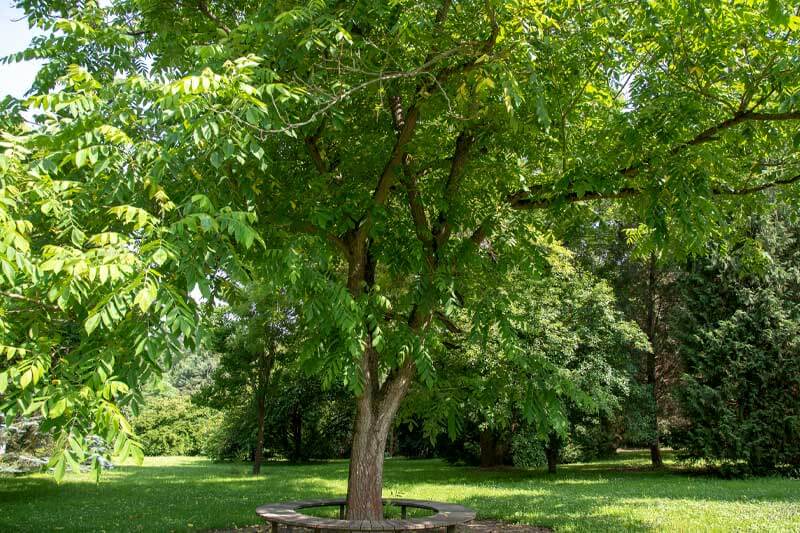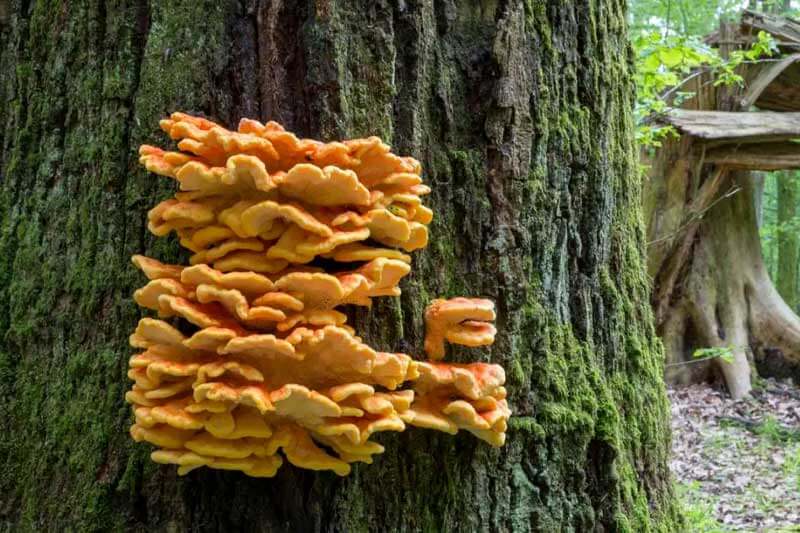You can find a lot of beauty and aesthetic value by planting trees in your home’s landscape. Cleaner air and more comfortable shades are also benefits of tree planting.
However, even with the finest care, your trees can still contract a disease. As a non-arborist, you must therefore know the tell-tale signs of a healthy or ailing tree. You can identify these signs by frequently examining your trees’ trunks, buds, branches, bark, and leaves.

| Condition of : | Healthy Trees | Unhealthy Trees |
|---|---|---|
| Trunks | A Single Healthy Trunk | Multiple Splitting Trunks |
| Buds | New buds annually | Little or no budding |
| Branches | Green Living Branches | Brown Dead Branches |
| Barks | Strong Barks | Peeling Barks |
| Leaves | Green, regular-shaped leaves during spring and summertime | Yellow, irregular-shaped, and variegated |
A Single Healthy Trunk
Your landscape trees should each have a single healthy trunk after pruning. This trunk acts as a leader by giving the tree a stable and upright appearance. Trees with multiple leaders often split, creating wounds for insects and diseases to take root. However, some tree species, like peach, cherry, nectarine, and plum trees, thrive with multiple trunks. Each trunk should have one primary leader.
Annual Budding
If your tree is healthy, it will develop new growth annually on its main stem and branches. You can examine yearly progress by measuring the distance between the previous year’s and the new season’s buds. Since this growth varies according to species, consult your local garden center to know what you should expect.
A great indicator of your tree’s annual growth is the growth rings on its main stem. The trunk of a healthy tree will annually grow in thickness. You can find out the yearly difference in trunk thickness by tape measuring.
Green Living Branches
Annually pruning dead and damaged branches will keep your trees in good health. Unpruned dead branches are a prime space for insects and disease infestation.
It is advisable to scrape any suspected branches using your thumbnail. A dead branch will reveal brown coloring underneath it instead of the green color of a living one. Slightly bending the branches can also be used to test them. Living ones will be flexible while dead ones will snap.
Strong Barks
If you have an evergreen tree such as pine, hemlock, and spruce, keep an eye out for bare or needle-free parts. Likely causes of bare patches on your tree’s bark include malnutrition, animal damage, poor pruning, insect infestation, diseases, and harmful pesticides.
The Pine Beetle, Bark Beetle, and Pine Weevil are examples of common insects that can damage your tree’s bark. However, a barren deciduous tree in winter should not make you worry. Naturally, deciduous trees grow their leaves in springtime and shed them in the fall.
Green, regular-shaped Leaves
Your tree’s state of health can be measured by how vibrant its leaves are. A deciduous tree’s leaves should be green throughout spring and summer. They can then change to either red, orange, or yellow in the fall. This change should happen to deciduous trees unless they naturally develop multi-colored leaves during spring and summer.
Healthy evergreens have green needles throughout the year. Discolored leaves on both evergreens and deciduous trees signify dehydration and malnutrition. Under-sized and irregularly shaped leaves also indicate a shortage of nutrients and damage by harmful pesticides, insects, or diseases.
Consult a Professional Arborist
Speaking to a qualified arborist is the first step if you think your tree might be stressed or unhealthy.
GoTreeQuotes is a great tool that quickly matches you with the best tree specialists in your locality. You can get three estimates from local tree service professionals in a matter of two minutes. Kindly follow the steps below to enjoy this great service:
- Scroll to the top of the page and enter your zip code.
- Answer questions about your tree service job.
- Your tree service details will be forwarded to three local experts who will send you a price estimate for your job with some friendly advice.
FAQ's
If your trees have mushrooms growing on their bark, that is a sign that they are suffering from decay. Mushrooms cause healthy trees to start rotting from the center of their trunks. This process is called heart decay. The best way to prevent heart decay on your trees is to minimize and immediately treat all wounds.
Mushrooms grow on wounded areas created by faulty pruning methods, weathering, and other tree-damaging events. They then reproduce through fruiting bodies that take root in old wounds. Their spores are transmitted through water, wind, insects, and animals from one tree to another.

If you have trees with buried root flares, expose them immediately. This exposure will reduce the stress on your trees caused by choked feeder roots. It will also keep their barks from the excessive moisture that weakens them and causes disease infestation at their base.
Exposed tree roots often indicate a lack of moisture and air in the soil. Such situations push your trees’ roots to seek survival near the surface. As your trees grow, so do the exposed surface roots. If not handled early, these roots can become so big that they prevent lawn mowing.
If your trees’ roots are exposed, it is advisable to cover them with a layer of mulch instead of a covering of soil. Excessive soil at once can choke tree roots, whereas adding a little by little is ineffective since it merely disappears into the ground.
Removal of tree roots is not recommended if you intend to keep the tree. any residual grass around your trees’ bases before mulching them. Mulching protects your trees’ roots from external damage while eliminating the need for lawn mowing. Mulch using shredded or broken hardwood bark, but beware of stained varieties that contain toxic dyes.



